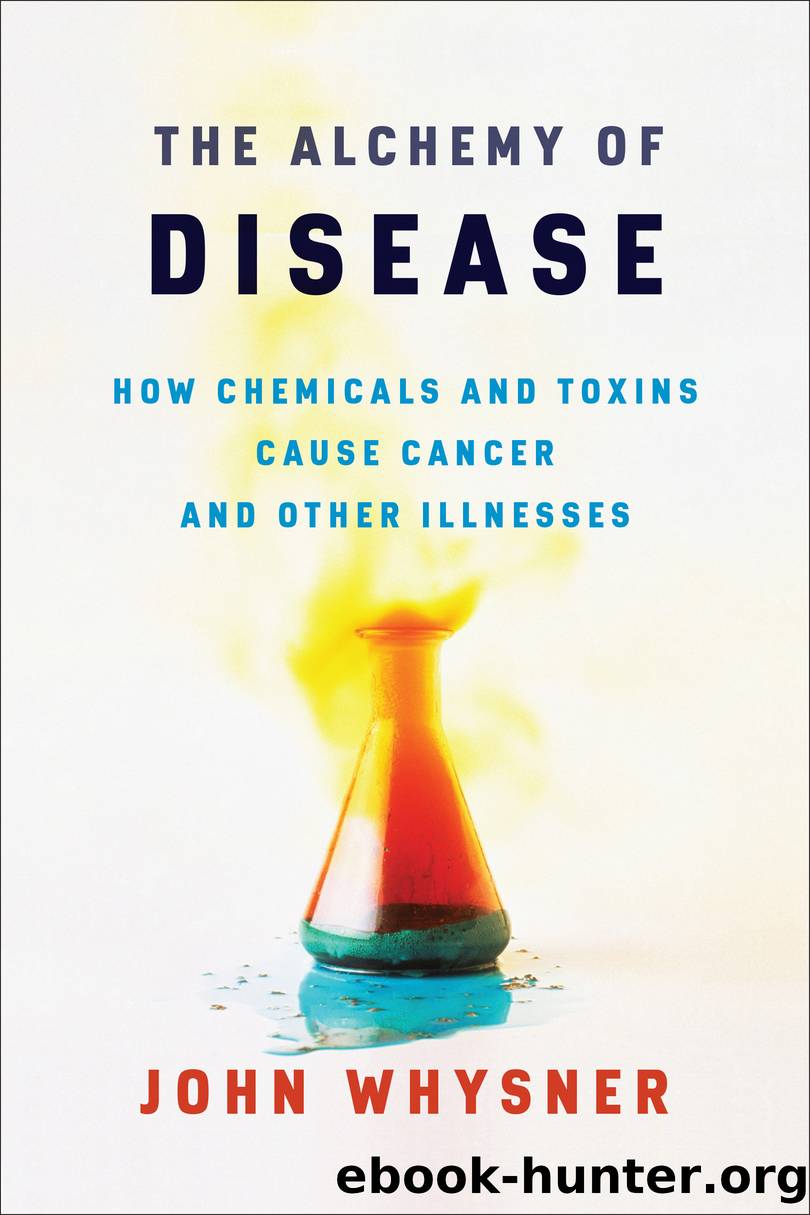The Alchemy of Disease by John Whysner

Author:John Whysner
Language: eng
Format: epub
Publisher: Columbia University Press
The liver is particularly prone to damage from ingested chemicals because they go directly from the intestine to the liver via the portal system. The portal vein drains the gastrointestinal tract, including the stomach and intestines, directly to the liver before the blood returns to the heart. This allows the body to have digested nutrients unloaded directly into the liver, the metabolic engine of the body. The kidneys are also susceptible to toxicity for some chemicals because they may be concentrated in the urine.
The central nervous system is protected from some chemical assaults by the blood-brain barrier produced by the particularly tight connections between the cells surrounding the blood vessels. For example, venom components are large protein molecules that can’t get past the blood-brain barrier. As a result, venoms do not affect the central nervous system but have their effect on the peripheral nervous system. Chemicals such as alcohol, however, have easy access to the brain because of their ability to pass through cell membranes. Thus too many drinks go straight to altering mental activity. In contrast, the components of the peripheral nervous system, for example the neuromuscular junction, are not protected by any barrier and so are susceptible to chemicals such as venoms.
The skin and lungs are in direct contact with the air in the environment. For occupational exposures the skin and lungs account for one-quarter of all nonfatal occupational illnesses, with the skin contributing a larger share. Many of these illnesses are caused by direct contact with industrial chemicals or natural substances.11 The dose involved in the contact may be relevant to injuries such as chemical burns, but a major cause of occupational skin disease involves allergic reactions where dose is less important than individual sensitivity and a history of previous exposures.
The lung is the organ most likely to experience effects from toxic substances in the air. In general, these are not chemicals that require metabolism but ones that react directly with cell membranes or cause an inflammatory response. Ozone is a chemical that is toxic to cell membranes and can be present in large quantities in the air, mostly in urban environments as smog. At higher concentrations, it causes toxic effects and destroys the alveolar air sacs where oxygen is exchanged for carbon dioxide. Sulfur dioxide, another chemical present in urban air, causes irritation in the air passages, producing constriction, so that it is difficult to exhale, as in asthma. Other agents, those implicated in the pneumoconioses, such as coal and asbestos, cause fibrosis of the lungs, preventing them from properly expanding and contracting.
Besides direct effects in the lung, inhaled chemicals can cause systemic toxicity after their absorption into the blood and subsequent circulation to organs and tissues. In this case, an exposure level in the air becomes a concentration in the blood. Not all of the chemical is usually absorbed, but because of the ability of some chemicals to cross cell membranes, absorption rates can come close to 100 percent. Therefore, for some chemicals air concentration can be correlated to blood concentration.
Download
This site does not store any files on its server. We only index and link to content provided by other sites. Please contact the content providers to delete copyright contents if any and email us, we'll remove relevant links or contents immediately.
When Breath Becomes Air by Paul Kalanithi(7261)
Why We Sleep: Unlocking the Power of Sleep and Dreams by Matthew Walker(5639)
Paper Towns by Green John(4169)
The Immortal Life of Henrietta Lacks by Rebecca Skloot(3826)
The Sports Rules Book by Human Kinetics(3586)
Dynamic Alignment Through Imagery by Eric Franklin(3488)
ACSM's Complete Guide to Fitness & Health by ACSM(3467)
Kaplan MCAT Organic Chemistry Review: Created for MCAT 2015 (Kaplan Test Prep) by Kaplan(3422)
Introduction to Kinesiology by Shirl J. Hoffman(3299)
Livewired by David Eagleman(3121)
The River of Consciousness by Oliver Sacks(2992)
Alchemy and Alchemists by C. J. S. Thompson(2911)
The Death of the Heart by Elizabeth Bowen(2901)
Descartes' Error by Antonio Damasio(2731)
Bad Pharma by Ben Goldacre(2727)
Kaplan MCAT Behavioral Sciences Review: Created for MCAT 2015 (Kaplan Test Prep) by Kaplan(2491)
The Gene: An Intimate History by Siddhartha Mukherjee(2491)
The Fate of Rome: Climate, Disease, and the End of an Empire (The Princeton History of the Ancient World) by Kyle Harper(2434)
The Emperor of All Maladies: A Biography of Cancer by Siddhartha Mukherjee(2430)
